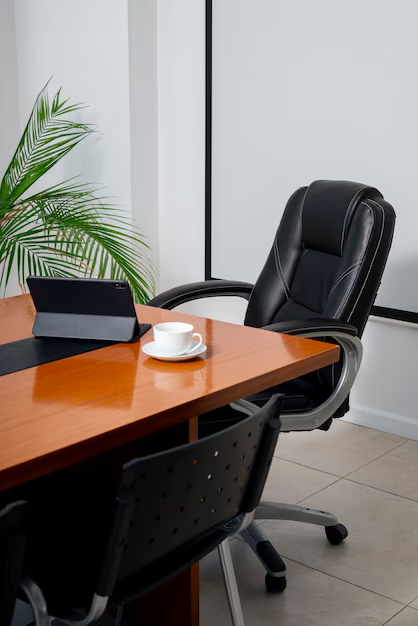Modern office workstations are transforming the way businesses operate by fostering productivity, enhancing collaboration, and providing ergonomic benefits. These innovative setups are designed to meet the evolving needs of today’s workforce, combining functionality with aesthetics. Let’s explore how are revolutionizing the traditional office environment and why they are essential for any contemporary workspace.
1. The Importance of Modern Office Workstations
Modern office workstations are no longer just desks and chairs. They are dynamic setups that cater to the diverse needs of employees. These workstations enhance productivity by offering organized and comfortable spaces, enabling employees to focus better on their tasks.

2. Key Features of Modern Office Workstations
Modern office workstations are equipped with features like:
- Adjustable Desks: Sit-stand desks promote health and flexibility.
- Cable Management Systems: Keep wires organized and out of sight.
- Ergonomic Chairs: Provide proper support, reducing back and neck strain.
- Integrated Technology: Charging ports, screens, and other tools are seamlessly incorporated.

3. Types of Modern Office Workstations
There are several types of to suit different office needs:
- Cubicle Workstations: Ideal for focused, individual tasks.
- Open-Plan Workstations: Promote collaboration and communication.
- Collaborative Pods: Great for teamwork and brainstorming sessions.
- Hot Desks: Perfect for flexible workspaces where employees do not have assigned seats.
4. Benefits of Modern Office Workstations
Modern office workstations offer numerous benefits:
- Enhanced Productivity: Employees work more efficiently in organized and comfortable spaces.
- Improved Health: Ergonomic furniture reduces physical strain and prevents long-term injuries.
- Aesthetic Appeal: Stylish designs create a pleasant work environment, boosting morale.
- Space Optimization: Modular designs make the best use of available space.
- Flexibility: Adjustable and customizable workstations meet varied employee preferences.
5. Modern Office Workstations and Employee Well-Being
Investing in demonstrates a commitment to employee well-being. Ergonomic furniture, proper lighting, and noise reduction solutions create a healthier and more comfortable environment, reducing stress and fatigue.
6. Sustainability in Modern Office Workstations
Modern office workstations often incorporate sustainable materials. Recycled wood, low-VOC finishes, and energy-efficient designs contribute to eco-friendly office spaces, aligning with the values of environmentally conscious businesses.
7. Technology Integration in
With the rise of hybrid and remote work models, technology plays a vital role in Features like built-in monitors, wireless charging stations, and video conferencing setups ensure seamless connectivity and collaboration.
8. Customization Options for
Businesses can personalizeto reflect their brand identity. Custom finishes, colors, and layouts create a cohesive look that aligns with the company’s culture and values.
9. Cost-Effectiveness of
Although may require an upfront investment, their durability and efficiency lead to long-term savings. High-quality materials and designs reduce maintenance costs, while increased productivity ensures a significant return on investment.
10. Designing for Diverse Needs
Modern offices accommodate a diverse workforce. Workstations designed for inclusivity—such as height-adjustable desks and accessible layouts—ensure that all employees can work comfortably and effectively.
11. Trends in Modern Office Workstations
Current trends shaping modern office workstations include:
- Biophilic Design: Incorporating natural elements for a calming effect.
- Minimalist Aesthetics: Clean and clutter-free workspaces.
- Smart Workstations: Integration with IoT devices for efficiency.
- Collaborative Zones: Spaces designed to foster teamwork and creativity.
12. Modern Office Workstations and Remote Work
Modern office workstations also cater to remote work setups. Compact, portable designs and integrated tech solutions ensure employees remain productive, whether in the office or at home.
13. Choosing the Right Modern Office Workstations
When selecting consider factors like:
- Space Availability: Ensure the design fits the office layout.
- Employee Needs: Identify ergonomic and functional requirements.
- Aesthetic Preferences: Match the design with your brand image.
- Budget: Balance cost with quality and durability.
14. Modern Office Workstations: A Competitive Edge
Incorporating modern office workstations gives businesses a competitive edge. A well-designed workspace attracts top talent, enhances employee retention, and reflects positively on clients and partners.
15. Future of Modern Office Workstations
The future olies in adaptability and innovation. Modular designs, AI integration, and a focus on sustainability will continue to shape the evolution of workplace furniture.
Conclusion
Modern office workstations are more than just furniture; they are essential tools for creating productive, comfortable, and sustainable work environments. By investing in these advanced setups, businesses can enhance employee satisfaction, optimize space, and achieve long-term success. Whether you’re setting up a new office or revamping an existing one, are a wise investment for the future.
